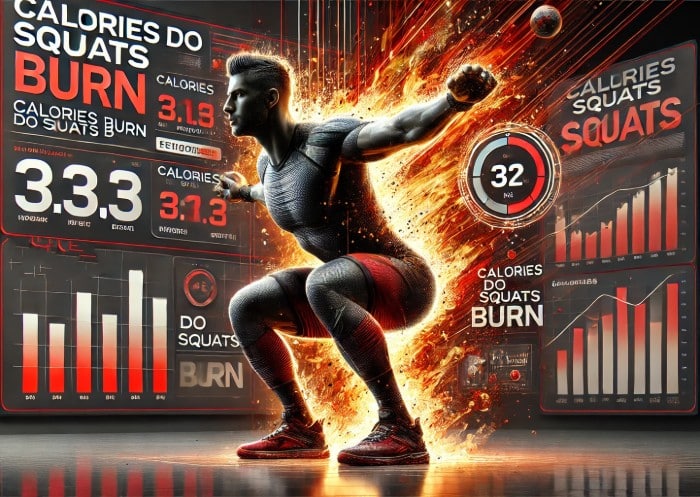How Many Sit-Ups Should I Do A Day?
Ever wonder how guys and gals walking around with a six-pack set of abs manage to build a set of abdominal muscles that you could grate cheese on?
Well, the answer isn’t just genetics, it’s hard work, dedication, motivation, commitment, and a healthy diet in the process.
When people talk about working your abs and your core, there’s one exercise that instantly springs to mind, and that one exercise is the sit-up.
Sit-ups, or stomach crunches, as they are sometimes called, are very effective core exercises for people looking to strengthen their cores, work their obliques, and target their abdomens. If you want a six-pack, you need to include sit-ups as part of your training routine.
But how many sit-ups should I do a day?
Well, that depends entirely on you, your physique, and your goals in general. Forget about all of these nonsense “challenges” asking you to perform upwards of 1000 sit-ups a day because they’re not viable, nor are they sustainable or safe for that matter. The simple answer is ‘as many as it takes.’
Okay, we know that’s a very vague answer, but don’t worry, we’re going to be looking at sit-ups in more detail shortly.
What Are Sit-ups?
First, we’re going to be looking at what sit-ups actually are.
Sit-ups are very simple, but very effective exercises you can perform to target your abdominal muscles, your obliques, your core, and your stabilizer muscles. If you’re looking for simple and effective exercises to work your stomach muscles, sit-ups should be right at the top of your list of priorities.
To perform sit-ups you basically lay flat on your back with your knees bent and your feet wedged under a bench or something to keep them firmly in place. You then place your hands behind your head, or across your chest, and slowly sit up straight, making sure to keep your legs and feet nice and still.
You’ll then lay back down and repeat the movement over and over again for as many reps as needed. You should feel a deep stretch in your abs that becomes more pronounced with each rep you perform.
They may be simple to perform, but the simplest exercises are the best and if you want to work your abdominal muscles, you’ll find no greater exercise than the humble sit-up.
Which Muscles Are Worked With Sit-ups?

When you perform sit-ups you’ll find that you use a wide range of muscles in your core and surrounding area. So many in fact, that sit-ups can actually be considered very effective compound exercises.
An isolation exercise is one that targets and works just one major muscle group. A compound exercise by comparison, however, is one that targets and works one major muscle group along with several other muscles at the same time.
Here’s a look at some of the key muscle groups that are worked with sit-ups.
Rectus Abdominis Muscles
When people talk about their abs, chances are that they’re talking about their rectus abdominis muscles.
The rectus abdominis muscle is the largest muscle head in the abdomen and is the one responsible for the elusive six-pack. Don’t take this number too literally, however, some people only have a four-pack, some an 8 pack, and some even have a 10-pack!
By the time you’ve finished your ab workout, your rectus abdominis muscles should have received an almighty workout.
Oblique Muscles
Your obliques are sometimes referred to as love handles, and although technically this isn’t exactly correct, they are located in the same position.
Your obliques attach to your abs on either side, along with the rib cage and the pelvis as well. They’re tall and thin and are located on either side of the rectus abdominis muscles. People often neglect their obliques when they train their abs, which is why sit-ups are so useful.
Sit-ups are ideal for working your abs and your obliques simultaneously. For the ultimate six-pack, however, you should also isolate the obliques with exercises that specifically target these muscles.
Iliopsoas
The Iliopsoas muscle is located around the pelvis and is recruited when you lift your legs upwards towards the hips and pelvis area.
If you do a lot of sitting, your Iliopsoas muscle will likely be very weak which is where exercises like sit-ups prove useful. If you want to really target this muscle, though, leg raises or hanging leg raises are perfect.
Core Stabilizers
Your core stabilizer muscles are secondary muscles located in and around the core. They help you to perform exercises and movements that utilize the core and are ideal for doing an effective sit-up.
You also have stabilizers in your upper body which help you to complete the exercise. These are primarily found in the chest, shoulders, and neck.
Rectus Femoris
Because this muscle is located in the leg and is a part of the quadriceps muscle, which is the biggest in the body, people often overlook this when training their abs and doing sit-ups.
Despite being found in the quads, this muscle attaches to the pelvis and works in conjunction with the Iliopsoas muscle to help the hips bend at the top of the movement.
What Are The Benefits Of Sit-ups?
Sit-ups are fantastic exercises for people who want a stronger core, and more defined abdominal muscles. But what is it that makes them so wonderful? Well, that’s what we’re going to be finding out right now.
Here’s a look at some of the main benefits of performing sit-ups.
Great For Core Strength
One of the most advantageous benefits associated with sit-ups is the fact that they’re great for working your core and increasing core strength.
Your core is at the center of all of your movements and it is very important in terms of functional strength, and muscular strength too. If you have a strong core, you’ll likely be stronger, fitter, and more flexible than somebody with a weak core. You will also be less likely to sustain an injury.
Sit-ups help to strengthen the muscles that make up and benefit your core, which in turn means that they’re fantastic for boosting core strength.
Build A Six-pack
Perhaps the most common reason why people perform sit-ups is so that they can get that all-elusive six-pack that they’ve been yearning after for so long.
Sit-ups primarily target your rectus abdominis muscles, which are essentially the ab muscles responsible for a six-pack. The more sit-ups you do, the bigger, stronger, and more defined these muscles will be.
Just like your biceps will grow with the more biceps exercises you do, so too will your abdominal muscles with the more sit-ups and core exercises you perform. Just be aware that your abs won’t be visible if your body fat percentages are too high.
You can work them with sit-ups by all means, but if there is a layer of fat covering them, they won’t be visible until you strip that fat away.
Easy To Do
Another of the main benefits of doing sit-ups as part of your training routine is the fact that they’re so easy to perform.
Sit-ups are not a very technical exercise to master. You don’t need to get into any uncomfortable positions, set up a complex machine, or load and unload a bar to do them. You simply lay down on your back, wedge your feet under something sturdy, bend your knees, and then sit up.
If you’re new to training and are looking for a simple and basic ab workout, sit-ups should be the primary ab exercise that you perform.
Sit-ups Make You Stronger
Believe it or not, but one of the secrets to being able to lift heavy weights and record some impressive numbers in the gym, is having a strong core.
As mentioned, your core is responsible for generating the majority of your overall strength and power. The stronger your core, the stronger you will be as a result.
Whether you want to boost your deadlift, squat more, bench heavier, press more weight, or anything else for that matter, make sure you work your core by doing plenty of sit-ups regularly. In terms of basic core strengthening exercises, you cannot go wrong with sit-ups.
You can also get a general idea about deadlifting and squatting on the same day.
Burn More Fat
It isn’t just abdominal muscle that sit-ups help to build, they also help you to look leaner and to burn fat.
Sit-ups are compound exercises that work several muscles at once, they are, therefore, harder than you think and they burn more calories and require more energy as a result.
While you won’t get lean from sit-ups alone, if you’re doing cardio, are eating clean, and are in a calorie deficit, sit-ups will certainly help you burn off more fat and get leaner.
Can Be Done Anywhere
Remember how, during lockdowns in 2020 and 2021 after the Coronavirus pandemic, gyms around the world were forced to close for months on end? We sure do, and we remember just how difficult it was to get a decent workout in.
One of the best things about doing sit-ups as part of your training routine is the fact that sit-ups can be done virtually anywhere, without the need for a gym, or any real equipment.
Whether you’re in the garden, at home, at work, at the park, or anywhere else, all you need to perform sit-ups is a little open space and something to wedge your feet under and keep them anchored in place. A lot of people at home use tables or chairs, or have a friend or family member hold their feet in place.
The fact that sit-ups can be done anywhere makes them extremely beneficial as you don’t need a gym, fancy equipment, or any huge areas of open space either.
Build Muscle
Again, another reason to consider doing more sit-ups and ab work as part of your training routine is the fact that it will allow you to build muscle.
Sit-ups are resistance bodyweight exercises that allow you to build muscle. Not only do sit-ups build up your abs, but they also help to strengthen your core, which means that you will be stronger and can therefore lift more weight.
The more weight you can lift, the more progressive overload you can implement when training, which means the more muscle you will build.
Improve Your Breathing Patterns
When people talk about the benefits of sit-ups, they often focus on the aesthetic benefits and overlook the health and physical benefits they provide.
Without a doubt, one of the most uncommonly known advantages of performing sit-ups is the fact that they help to improve your breathing patterns.
Sit-ups help to strengthen the diaphragm, which means that your respiratory function improves as well. This is not only beneficial in terms of your health, but it’s also beneficial in terms of athletic performance. Better breathing more oxygen can enter the bloodstream, which in turn means that more oxygen can be carried to the muscles and used as energy.
Reduced Risk Of Injury
Finally, the last benefit of sit-ups that we’re going to be looking at today, is the fact that sit-ups help to significantly reduce your risk of injury.
When you exercise, play sports, or are simply physically active, there is always the risk of injury. whether it’s a pulled muscle, a torn muscle, a sprain, or anything else, injuries can and do occur.
A great way of reducing your risk of injury, especially in and around your midsection, is to perform plenty of sit-ups and strengthen your abdominal muscles and your core. Having a strong core and abs means that you’ll be less likely to get a hernia, tear an adductor, dislocate your hip, or anything similar for that matter.
How Many Sit-ups Should I Do A Day?
How long is a piece of string?
In truth, we cannot provide a reliable answer to this question because there are so many variables to consider.
People often wonder how many sit-ups they should do each day, but in reality, it depends on what they want from their training, and which goals they have in general. Somebody looking to tighten their midsection up a little for example, will not perform as many sit-ups as somebody who wants the world’s most impressive six-pack.
We can tell you, however, to ignore any bro-science articles you read that tell you to do upwards of 1000 sit-ups per day.
Would you do 1000 barbell bicep curls a day to build your biceps?
No, of course, you wouldn’t, so why would you do 1000 sit-ups?
As a very general rule of thumb, most people who perform sit-ups every day will do roughly 3 sets of 30 reps, which is plenty each day. If you train abs just once or twice a week, however, you’ll likely want to combine sit-ups with another couple of ab exercises, again aiming for the same number of sets and reps.
How Many Sit-ups Should I Do A Day To Burn Belly Fat?
Okay, stop!
Before we go any further, we need to clear something up. You cannot spot reduced fat on your belly or anywhere else. You cannot pick and choose where you lose weight from. It would be wonderful if you could, but it simply is not possible.
Doing sit-ups will of course help you to lose weight by burning calories, but you can’t do sit-ups with the expectation of burning belly fat so that you reveal your abs underneath.
If you create a calorie deficit you will lose weight from anywhere that you have stored excess body fat. If you have body fat on your stomach, you’ll lose some from there, and some from other parts of your body too.
Final Thoughts
So, how many sit-ups should I do a day?
Well, generally we recommend no more than 100 per day, or thereabouts unless you are following a very specific program designed by a pro.
Sit-ups are beneficial, but you can certainly have too much of a good thing. The more you do, the weaker you will make your abs and the less time you will give them to recover. Really, you shouldn’t be training the abs every day anyway, but if you do, 3 – 4 sets of 20 – 30 reps should be plenty.






